
Mar 5, 2025
What is Focal Length?
Understanding the Basics of Angle of View and Focal Length
When using an interchangeable lens camera—whether a DSLR or mirrorless model—understanding focal length is essential for capturing stunning and dynamic images. The focal length of a lens directly influences the angle of view, focus, and the depth of background blur (bokeh), all of which contribute to the overall impact of your photos. Choosing the right lens requires a solid grasp of how focal length affects composition, as it determines how much of a scene fits within the frame. By mastering these fundamentals, you can bring your creative vision to life and take photos just as you envision them.
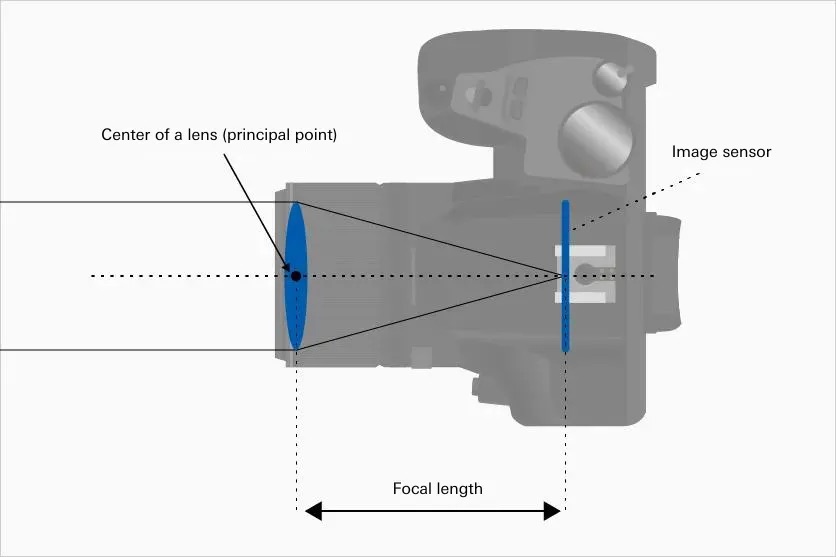
What is Focal Length?
When light enters a lens, it converges at a specific point known as the focal point. Although light naturally travels in a straight line, it bends (refracts) when passing through a lens, directing all rays toward this focal point. At this precise location, an image is formed. If an image sensor is positioned at the focal point, the camera can capture the scene. Focal length refers to the distance between the center of the lens (also called the principal point) and the image sensor. This measurement plays a crucial role in defining a lens’s characteristics, influencing the angle of view and magnification of the captured image.
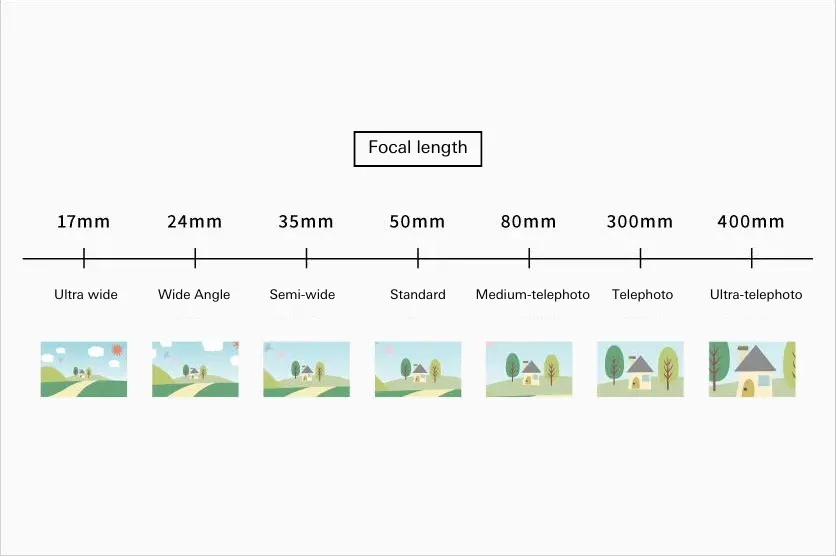
Understanding “mm” in Focal Length
The focal length of a lens is typically marked in millimeters (mm) on the lens itself. For example, in a product name like “28-75mm F/2.8,” the numbers indicate the focal length range of the lens.
Lenses fall into two main categories:
Prime lenses have a fixed focal length, meaning they offer a single “mm” value, such as 20mm.
Example: 20mm F/2.8 Di III OSD M1:2 (Model F050)Zoom lenses have a variable focal length, displayed as a range (e.g., 28-75mm), allowing for flexible composition by zooming in and out.
Example: 28-75mm F/2.8 Di III VXD G2 (Model A063)
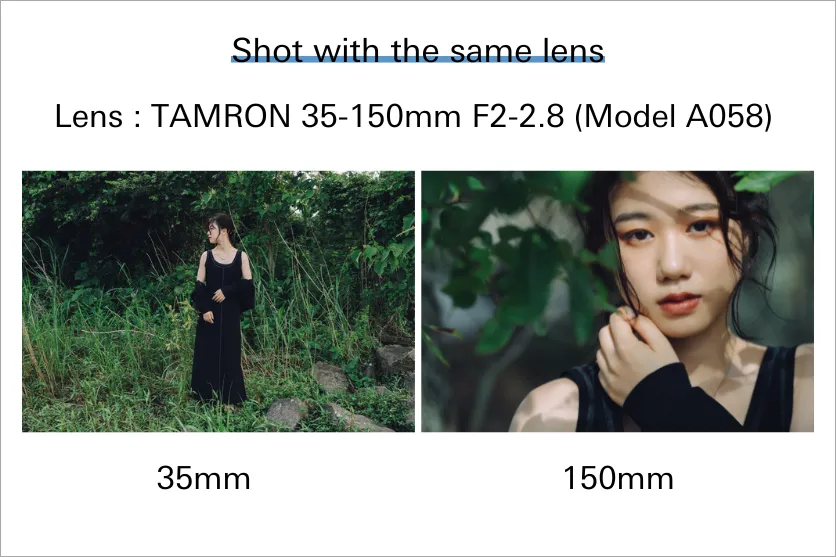
How Focal Length Affects the Angle of View
One of the most important aspects of focal length is its influence on the angle of view, which determines how much of a scene is captured in the frame. A shorter focal length results in a wider angle of view, allowing more of the surroundings to be included. Conversely, a longer focal length narrows the angle, focusing on a smaller portion of the scene.
Lenses are generally categorized based on their focal length. Wide-angle lenses capture expansive views and are great for landscapes or architectural shots. Standard lenses offer a natural perspective, similar to the human eye, making them versatile for various photography styles. Telephoto lenses magnify distant subjects and create a strong separation between the subject and background.
Understanding how focal length affects composition helps in choosing the right lens for different creative needs. A wide-angle lens emphasizes the relationship between the subject and its environment, while a telephoto lens draws attention to details, softens the background, and enhances subject isolation. By experimenting with different focal lengths, photographers can shape the mood and impact of their images.
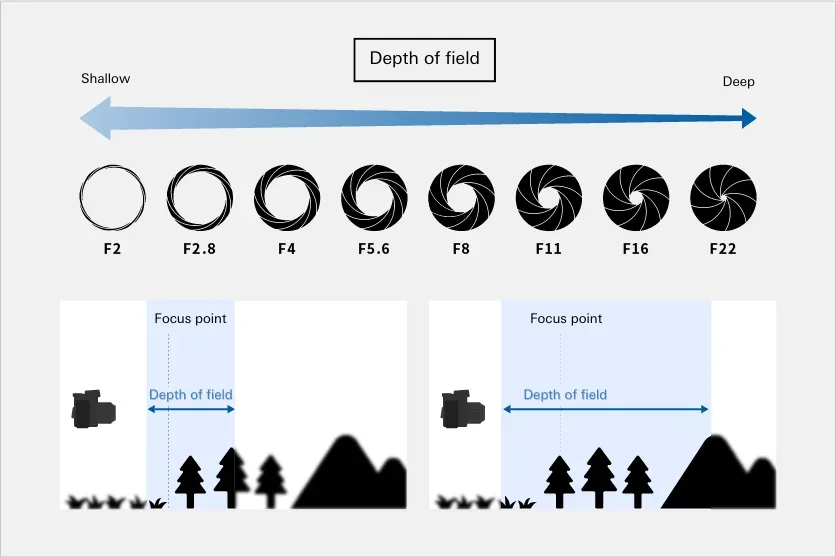
How Focal Length Affects Depth of Field
Another key characteristic of focal length is its influence on depth of field, which refers to the range in an image that appears sharp and in focus. A deep depth of field keeps both the subject and background clearly visible, while a shallow depth of field isolates the subject with a beautifully blurred background.
Shorter focal lengths, especially when combined with a smaller aperture (higher F-number), result in a greater depth of field. This makes wide-angle lenses ideal for landscape photography, where capturing fine details from foreground to background is important.
In contrast, telephoto lenses have a naturally shallow depth of field, creating a strong background blur that enhances subject separation. This effect is particularly useful for portraits, drawing attention to facial expressions while softening distractions in the background. By understanding how focal length affects depth of field, photographers can control focus and blur to create the desired visual impact.
What is “35mm-Equivalent”? Understanding Sensor Size and Its Impact
While focal length is a key specification in lens selection, it’s equally important to consider the sensor size of your camera. The sensor size influences how much of a scene is captured and directly affects the effective focal length of a lens.
Digital SLR and mirrorless cameras typically feature one of two sensor sizes: 35mm full-frame or APS-C. A full-frame sensor measures 36mm x 24mm, capturing a wider field of view with enhanced light sensitivity and smoother tonal transitions. APS-C sensors, which vary slightly by manufacturer but are generally around 23.5mm x 15.6mm, have a smaller surface area and capture a narrower portion of the scene.
Since lenses are designed to match specific sensor formats, choosing a lens compatible with your camera is crucial. When using an APS-C camera, the effective field of view differs from what is indicated on the lens. To standardize focal length comparisons, the “35mm-equivalent” conversion is used.
Most focal lengths are referenced in terms of full-frame cameras, so for APS-C models, the focal length needs to be adjusted using a crop factor. The typical conversion factor is 1.5x for Sony and Nikon, and 1.6x for Canon. This means that a 50mm lens on an APS-C camera effectively provides the same field of view as a 75mm (or 80mm for Canon) lens on a full-frame camera.
Understanding this conversion helps photographers anticipate how a lens will frame a scene and choose the right focal length based on their camera’s sensor size.
The Relationship Between Focal Length and F-Number (Aperture)
Along with focal length, the F-number (aperture value) is a key specification that defines a lens’s characteristics. The smaller the F-number, the wider the aperture, allowing more light to enter the lens. This increased light-gathering ability expands creative possibilities, especially in low-light conditions or when aiming for a shallow depth of field.
The F-number is calculated using the formula: F-number = Focal Length ÷ Lens Effective Diameter
A lens with a lower maximum F-number (wider aperture) is considered “fast”, as it can capture more light and enable faster shutter speeds. This makes it ideal for shooting in dim environments or creating a beautifully blurred background (bokeh).
When selecting a lens, considering both the focal length and F-number helps in achieving the desired exposure, sharpness, and depth of field for different photographic styles.
Recommended Zoom Lenses Covering a Wide Range of Focal Lengths
TAMRON offers a selection of high-performance zoom lenses designed to cover a broad focal length range while remaining compact and easy to carry. These lenses not only provide versatility but also feature excellent image quality and close-up shooting capabilities, making them ideal for a variety of photography styles.
Wide-Angle Zoom Lenses
Wide-angle zoom lenses extend from ultra-wide to standard focal lengths, offering flexibility for different shooting scenarios. Ultra-wide lenses enable photographers to capture expansive scenes, making them perfect for architectural photography, landscapes, and dynamic urban shots. Their ability to emphasize perspective also opens creative possibilities for portraits and pet photography, adding a unique visual impact. TAMRON’s lightweight and compact design makes these lenses particularly convenient for travel and outdoor photography, where mobility is essential. Whether you’re capturing sweeping landscapes or experimenting with dramatic compositions, these zoom lenses provide the range and quality needed to bring your vision to life.
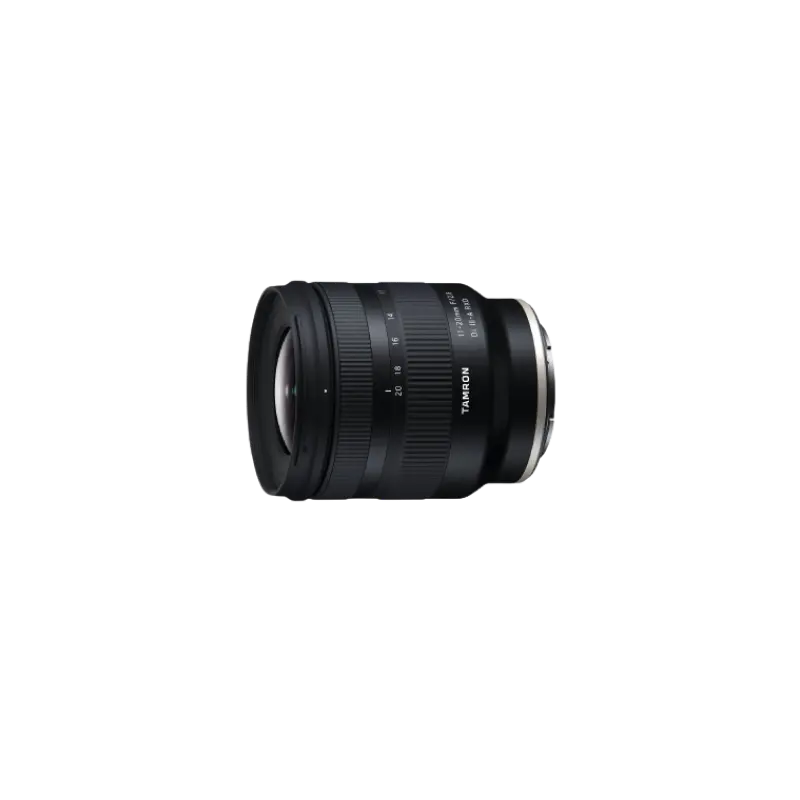
11-20mm F/2.8 Di III-A RXD (Model B060)
The 11-20mm F/2.8 Di III-A RXD (Model B060) is the world’s first compact and lightweight F2.8 ultra-wide-angle zoom lens designed for Sony E-mount APS-C mirrorless cameras. Its portable design and bright aperture make it an excellent choice for video shooting.
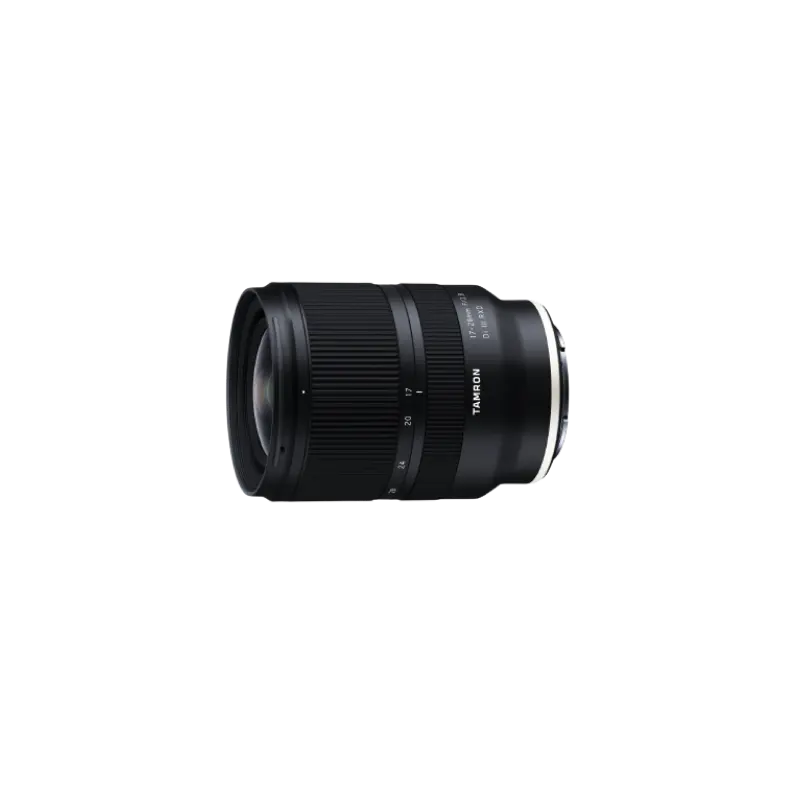
17-28mm F/2.8 Di III RXD (Model A046)
The 17-28mm F/2.8 Di III RXD (Model A046) stands out with its ø67mm filter diameter, an impressive feature for a large-aperture ultra-wide-angle zoom lens designed for full-frame cameras. Compact and lightweight, it offers excellent balance when paired with a camera, making it easy to handle. As a dedicated lens for mirrorless interchangeable-lens cameras, it is highly portable and versatile, making it suitable for a wide range of shooting situations.
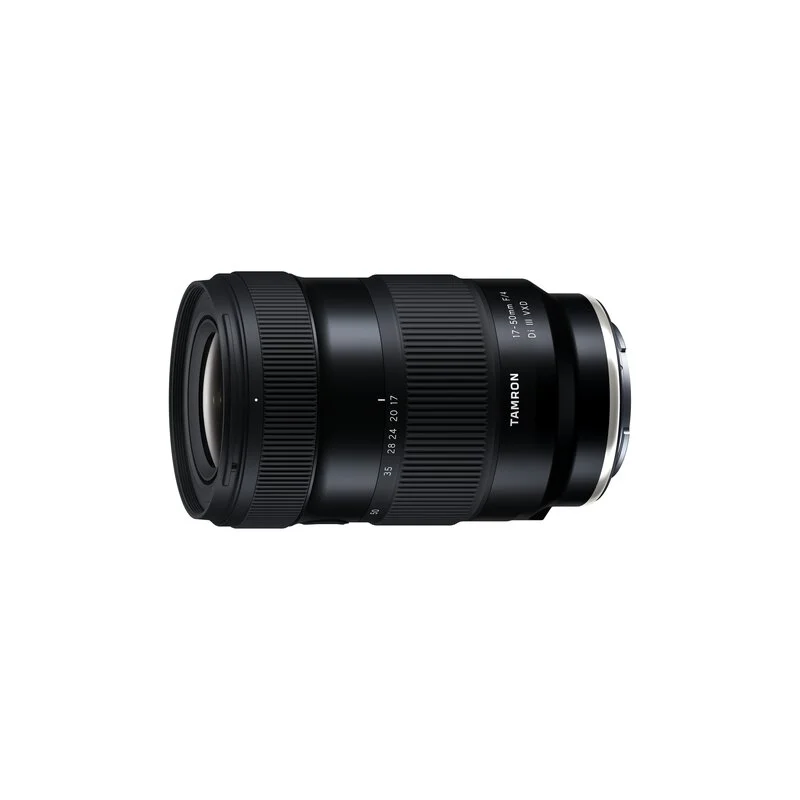
17-50mm F/4 Di III VXD (Model A068)
The 17-50mm F/4 Di III VXD (Model A068) is the world’s first lens to cover a focal range from ultra-wide 17mm to standard 50mm. Designed for Sony E-mount full-frame mirrorless cameras, this highly compact lens offers exceptional versatility for both photo and video creators. Whether capturing vast landscapes or intimate indoor scenes, the TAMRON 17-50mm F/4 ensures you can frame everything you see with clarity and precision.
Standard Zoom Lenses
A standard zoom lens spans from wide-angle to telephoto focal lengths around 50mm, offering versatility across various shooting scenarios. Beyond snapshots and portraits, these lenses excel in capturing landscapes at the wide end while allowing for detailed shots of animals and buildings at the telephoto end. Their flexibility makes them an essential choice for photographers seeking an all-purpose lens.
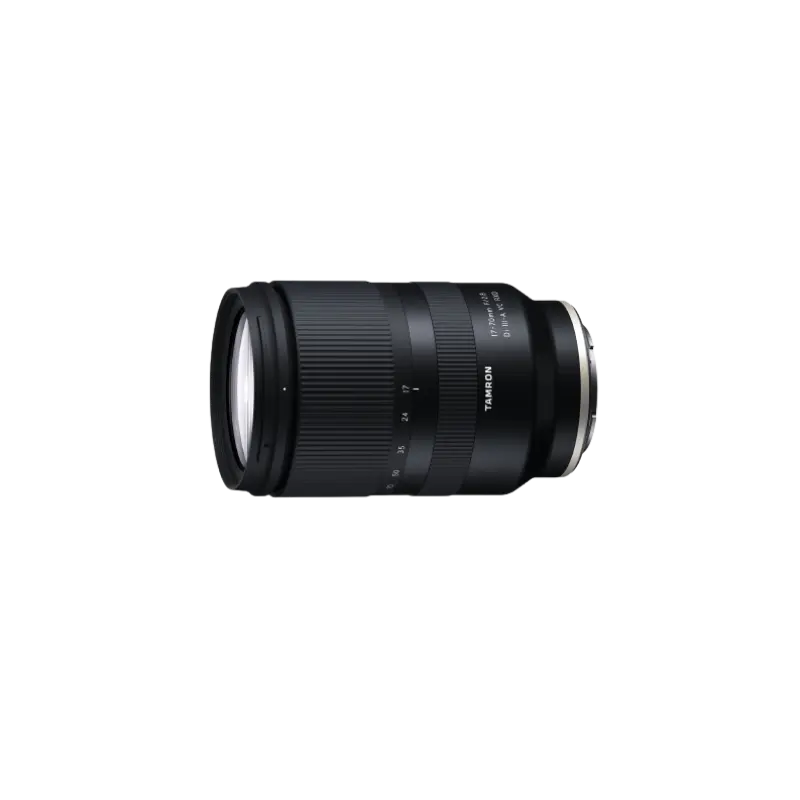
17-70mm F/2.8 Di III-A VC RXD (Model B070)
The 17-70mm F/2.8 Di III-A VC RXD (Model B070) is a large-aperture standard zoom lens designed for APS-C format mirrorless cameras. Covering a versatile 17mm to 70mm range (equivalent to 25.5-105mm on full-frame), it offers a 4.1x zoom, making it ideal for everyday use. Engineered for exceptional image quality, the lens delivers high resolution and contrast across the entire frame, from the center to the edges. Its quiet AF drive motor and VC image stabilization enable smooth, handheld shooting, enhancing both stills and video. Additionally, by minimizing focus breathing, the lens allows for seamless creative expression. With its bright F2.8 aperture, superb optical performance, and practical design, the 17-70mm F2.8 is a highly versatile choice for photographers and videographers alike.
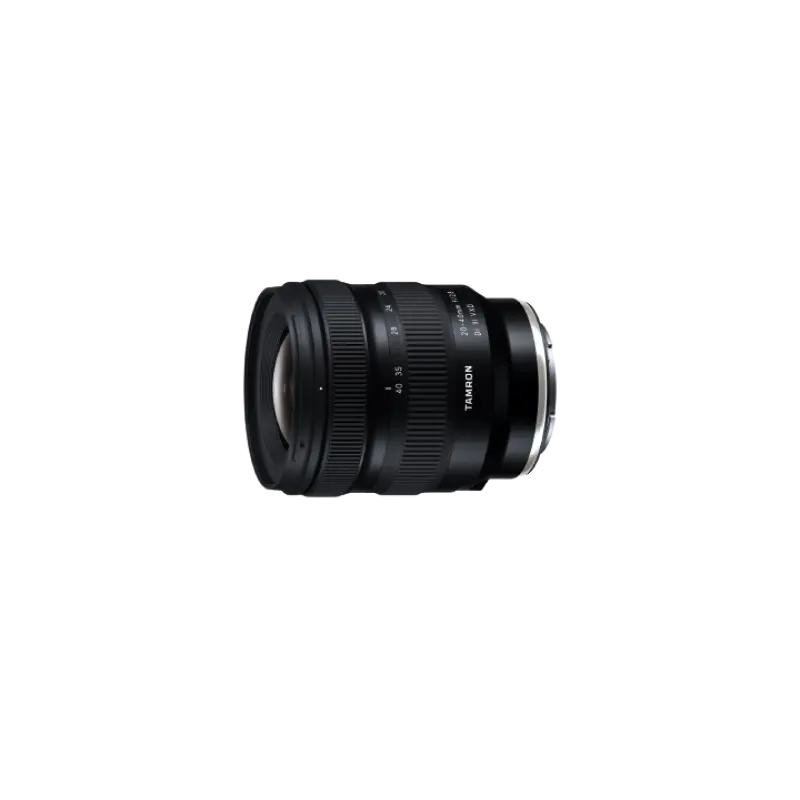
20-40mm F/2.8 Di III VXD (Model A062)
The 20-40mm F/2.8 Di III VXD (Model A062) is a large-aperture standard zoom lens designed with portability in mind. Spanning from an ultra-wide 20mm to a standard 40mm, it is the smallest and lightest lens in its class, making it highly convenient for everyday use. Delivering exceptional image quality across the entire zoom range, this lens is a versatile choice for both photography and videography, including vlogging. Equipped with VXD (Voice-coil eXtreme-torque Drive) technology, it offers quiet, high-speed, and precise autofocus, ensuring smooth operation in any shooting scenario. With its compact size, bright F2.8 aperture, and high performance, the 20-40mm F2.8 is an innovative zoom lens that makes capturing stunning stills and videos effortless.
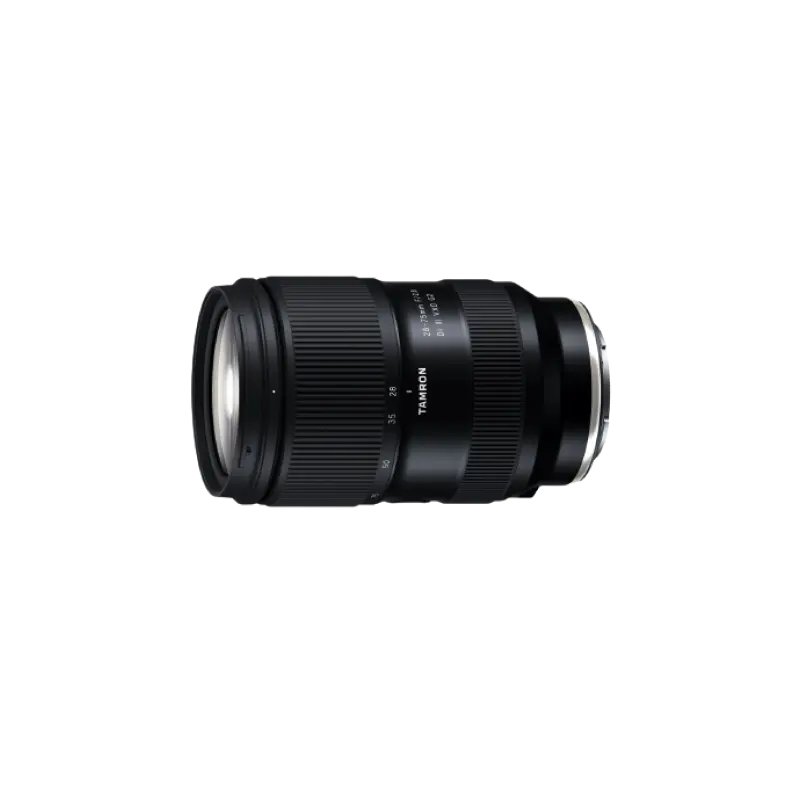
28-75mm F/2.8 Di III VXD G2 (Model A063)
The 28-75mm F/2.8 Di III VXD G2 (Model A063) is the second-generation fast-aperture standard zoom lens, designed for Sony and Nikon full-frame mirrorless cameras. This upgraded version delivers enhanced optical performance, faster and more precise autofocus, and new function customization options, making it a powerful and versatile choice for both photography and videography.
Telephoto Zoom Lenses
Telephoto zoom lenses allow photographers to bring distant subjects closer, making them perfect for sports events, wildlife, and bird photography. Their extended reach also enhances landscape photography, especially when combined with trekking, hiking, or mountaineering, capturing distant details with clarity. Beyond outdoor and action photography, telephoto zoom lenses are also excellent for portrait photography, producing beautiful background blur and compression effects that create a striking, professional look. Their ability to isolate subjects while maintaining a flattering perspective makes them a valuable tool for a wide range of shooting scenarios.
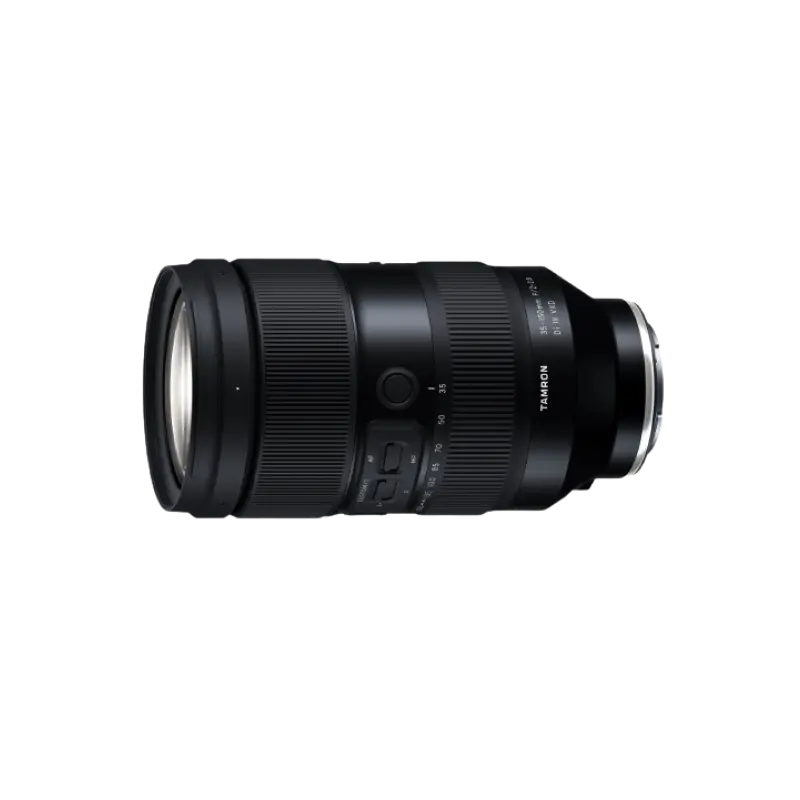
35-150mm F/2-2.8 Di III VXD (Model A058)
The 35-150mm F/2-2.8 Di III VXD (Model A058) is a high-resolution travel zoom lens that seamlessly transitions from a 35mm wide-angle to a 150mm telephoto range. It is the first zoom lens to feature an F2 aperture at the wide end, delivering exceptional brightness and versatility for various shooting scenarios. With its fast-aperture design and VXD (Voice-coil eXtreme-torque Drive) linear motor focus mechanism, the lens ensures high-speed, high-precision autofocus, making it ideal for both stills and video. The ergonomic redesign enhances grip and usability, while in-house developed software allows for easy function customization and firmware updates, offering photographers greater control and adaptability.
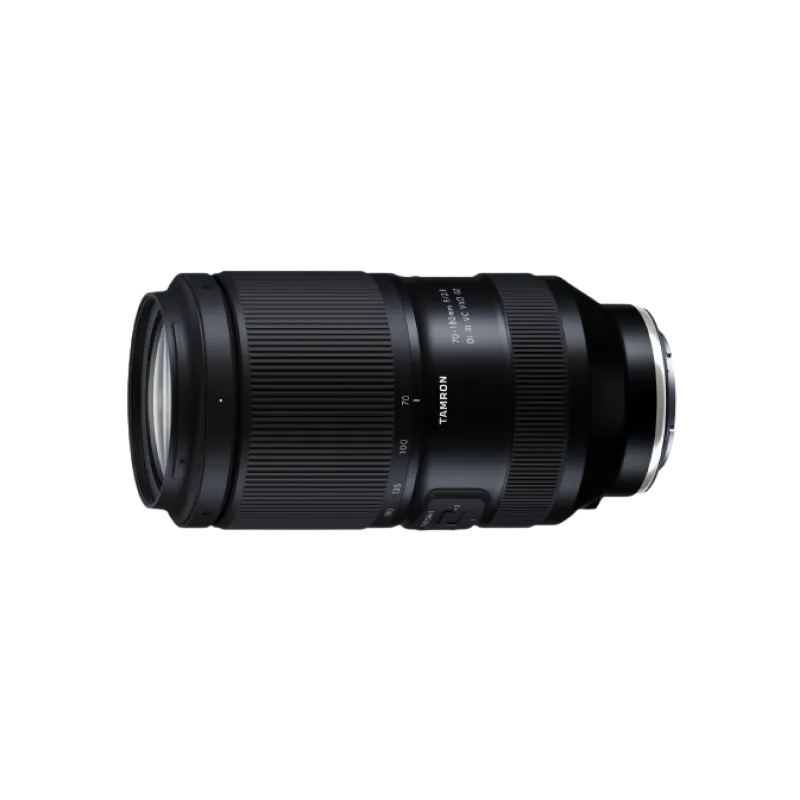
70-180mm F/2.8 Di III VC VXD G2 (Model A065)
The 70-180mm F/2.8 Di III VC VXD G2 (Model A065) has been upgraded to the G2 level, offering enhanced performance in a compact and lightweight design. As the world’s smallest and lightest fast-aperture telephoto zoom lens for Sony E-mount, it combines exceptional portability with outstanding image quality, making it an ideal choice for photographers seeking versatility without compromise.
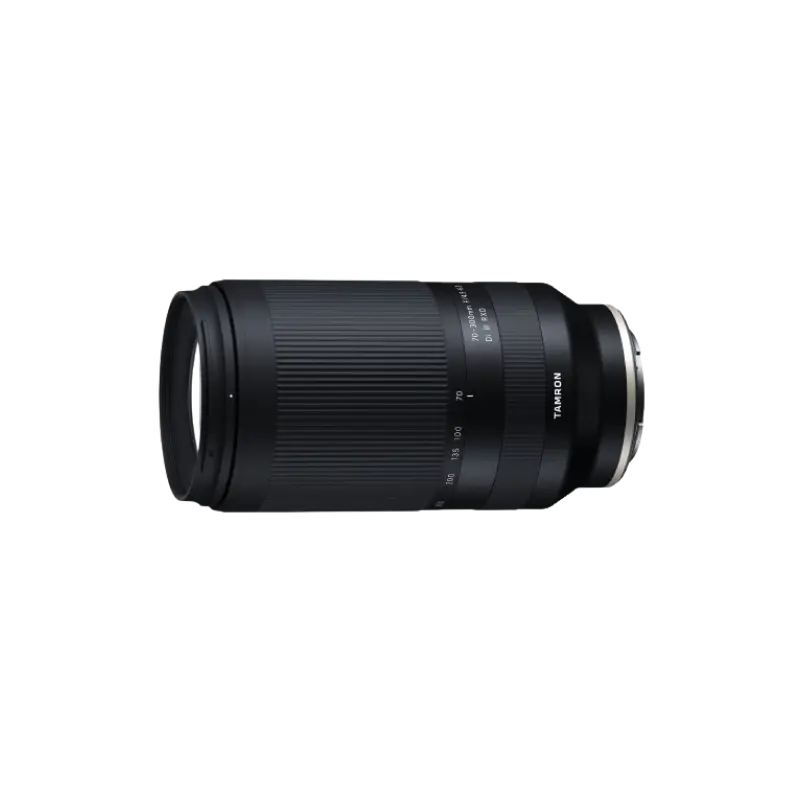
70-300mm F/4.5-6.3 Di III RXD (Model A047)
The 70-300mm F/4.5-6.3 Di III RXD (Model A047) is a telephoto zoom lens designed for full-frame mirrorless cameras, offering photographers of all skill levels the ability to capture high-quality images with ease. Despite covering a broad 70-300mm telephoto range, it remains the smallest and lightest in its class, ensuring excellent portability. With a strong emphasis on resolving power, TAMRON has integrated special lens elements to minimize chromatic aberration and other optical distortions, which are commonly seen in telephoto lenses. This results in sharp, high-resolution images complemented by the smooth, natural bokeh that only a telephoto lens can achieve. Equipped with RXD (Rapid eXtra-silent Drive) technology, the autofocus system is fast, precise, and quiet, making it well-suited for both photo and video applications. The 70-300mm F/4.5-6.3 is a highly versatile lens, ideal for landscapes, sports, action shots, wildlife, and pets, while also excelling in portrait photography and handheld shooting scenarios such as sporting events and casual snapshots.
Ultra-Telephoto Zoom Lenses
Ultra-telephoto zoom lenses are perfect for capturing distant subjects with stunning clarity. Their ability to magnify faraway scenes makes them ideal for wildlife photography, large-scale sporting events, aviation, and train spotting, where getting physically close to the subject is not an option. Beyond their reach, these lenses also offer compression effects and beautiful background bokeh, allowing photographers to create visually striking compositions. By isolating the subject and enhancing depth, ultra-telephoto zooms add a sense of drama and impact, making them an essential tool for capturing dynamic and compelling images.
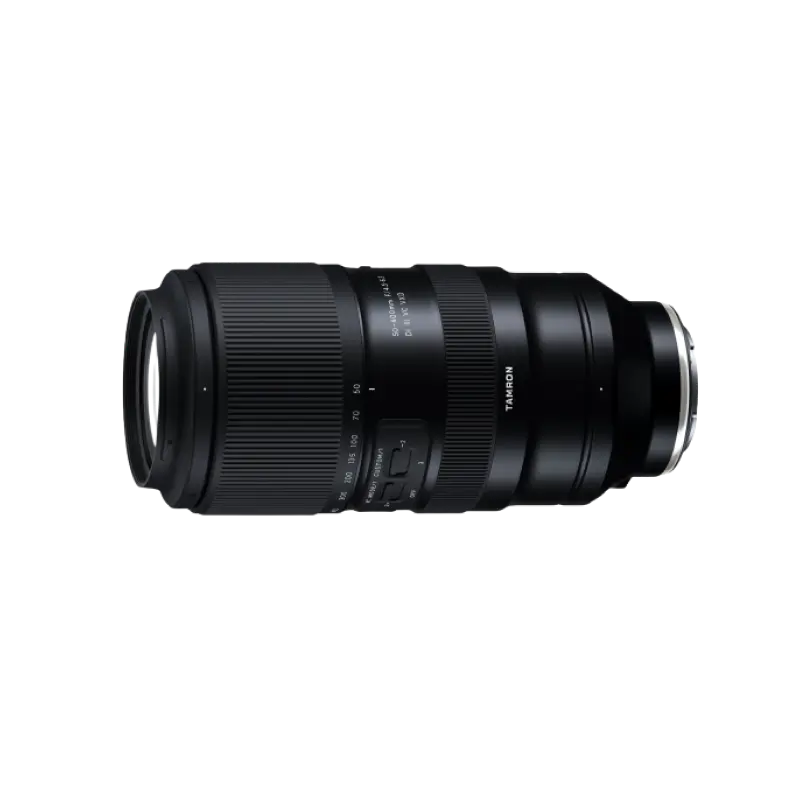
50-400mm F/4.5-6.3 Di III VC VXD (Model A067)
The 50-400mm F/4.5-6.3 Di III VC VXD (Model A067) is an ultra-telephoto zoom lens featuring an 8x zoom range, starting from 50mm at the wide-angle end, making it highly versatile for full-frame mirrorless cameras. Despite its broad focal range, it remains as compact and lightweight as a typical 100-400mm class lens, ensuring excellent portability without compromising performance. Designed for exceptional image quality across the entire 50-400mm range, this lens is equipped with VXD (Voice-coil eXtreme-torque Drive) technology for fast, high-precision autofocus and VC (Vibration Compensation) stabilization, making it perfect for capturing fast-moving subjects in sports and wildlife photography. Combining unmatched image quality, reach, and mobility, the 50-400mm F/4.5-6.3 is a groundbreaking ultra-telephoto zoom lens, offering photographers a powerful, all-in-one solution for a wide range of shooting scenarios.

150-500mm F/5-6.7 Di III VC VXD (Model A057)
The 150-500mm F/5-6.7 Di III VC VXD (Model A057) is a compact ultra-telephoto zoom lens that offers an impressive 500mm focal length while remaining lightweight enough for handheld shooting. Designed for versatility and ease of use, it allows photographers to explore the world of ultra-telephoto photography without compromising on image quality. Equipped with high-speed, high-precision autofocus and excellent tracking performance, the lens ensures sharp, detailed shots of fast-moving subjects. Its VC (Vibration Compensation) mechanism further enhances stability, making handheld shooting at long focal lengths more accessible. Whether capturing wildlife, sports, or distant landscapes, the 150-500mm F/5-6.7 delivers exceptional reach and performance in a portable package.
Understanding Focal Length to Choose the Right Lens
Focal length is a key specification that defines a lens’s characteristics. It refers to the distance from the center of the lens (principal point) to the camera’s image sensor and directly affects the angle of view.
• Wide-angle lenses have a short focal length, capturing expansive scenes and making them ideal for landscapes, architecture, and group shots.
• Telephoto lenses have a long focal length, bringing distant subjects closer, which is perfect for wildlife, sports, and portrait photography.
• Standard lenses fall between the two, offering a natural perspective suited for everyday photography and versatile shooting scenarios.
When selecting a lens, consider the focal length and how it influences composition, depth, and perspective. Choosing the right lens ensures that you capture the subject or scene exactly as you envision it.
TAMRON products mentioned in this article
20-40mm F/2.8 Di III VXD
Model A062
17-50mm F/4 Di III VXD
Model A068
50-400mm F/4.5-6.3 Di III VC VXD
Model A067
150-500mm F/5-6.7 Di III VC VXD
Model A057
70-300mm F/4.5-6.3 Di III RXD
Model A047
35-150mm F/2-2.8 Di III VXD
Model A058
28-75mm F/2.8 Di III VXD G2
Model A063
20mm F/2.8 Di III OSD M1:2
Model F050